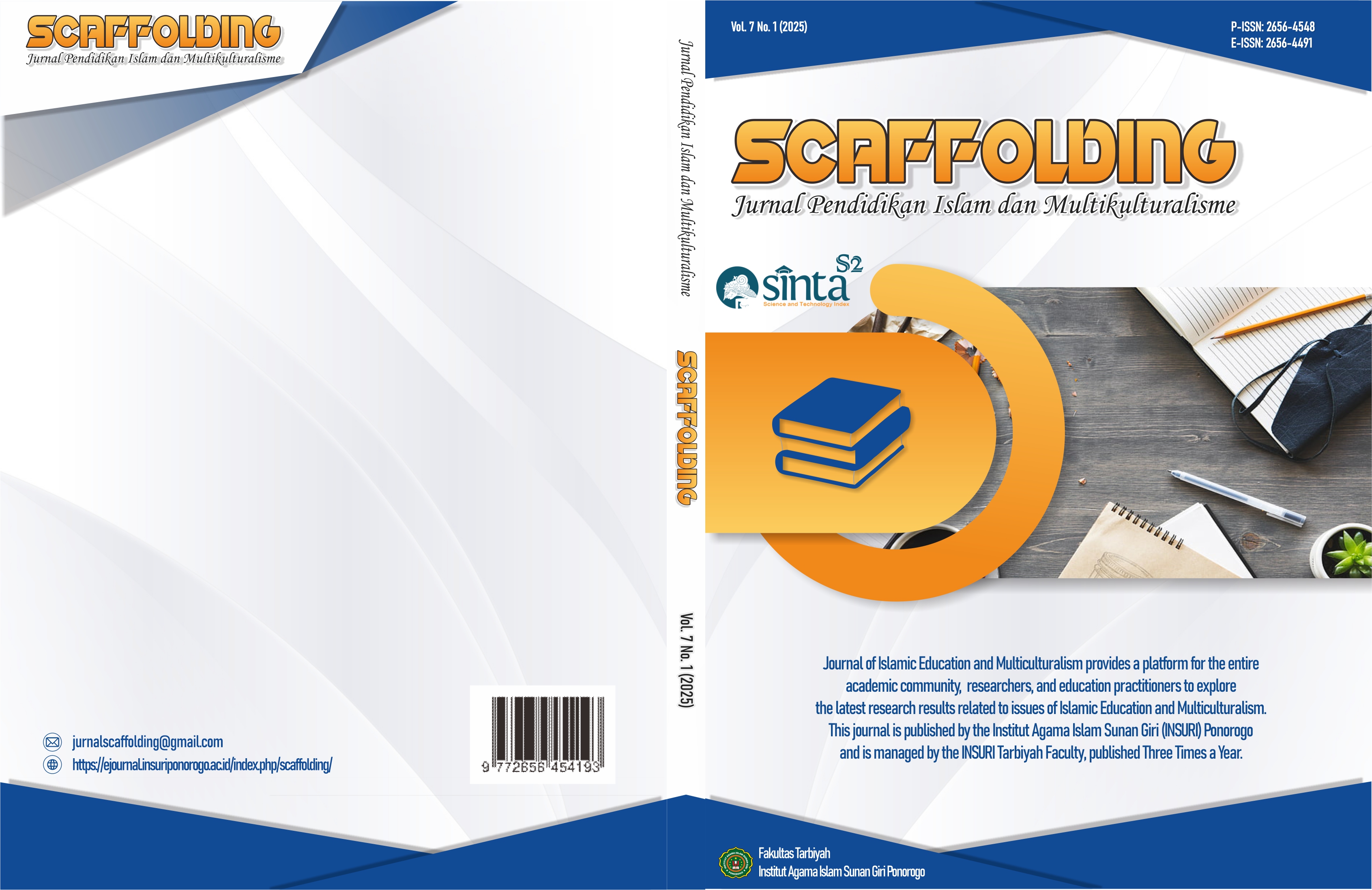Character Transformation Through the Implementation of the Radec Learning Model at the Elementary School Level
DOI:
https://doi.org/10.37680/scaffolding.v7i1.7268Keywords:
Implementation of Learning, RADEC Model, Elementary School, Character TransformationAbstract
This study aims to explore character transformation through the implementation of the RADEC (Read, Answer, Discuss, Explain, Create) learning model at the elementary school level. The research was conducted in Cluster III, Pagerageung District, Tasikmalaya Regency. A qualitative approach with a case study design was employed, involving 40 teachers as participants. The research data consisted of classroom observation results, in-depth interview transcripts with teachers, and lesson planning and evaluation documents related to the RADEC model. Data were collected through observation, in-depth interviews, and documentation studies. The data were analyzed thematically through stages of data reduction, data display, and inductive conclusion drawing to identify patterns in the implementation of the RADEC model and its impact on students’ character development. The findings indicate that the RADEC model can be effectively applied in classrooms, although variations in implementation exist. This model has proven effective in enhancing student character, particularly in aspects of cooperation, discipline, responsibility, creativity, and self-confidence. However, its application faces challenges such as limited time and inadequate facilities. This study recommends further teacher training and the improvement of learning infrastructure to support the optimal implementation of the RADEC model.
Downloads
Published
How to Cite
Issue
Section
License
Copyright (c) 2025 Nana Suryana, Wahyu Sopandi, Dasim Budimansyah, Yadi Ruyadi

This work is licensed under a Creative Commons Attribution-NonCommercial 4.0 International License.
Authors who publish with this journal agree to the following terms:
Authors retain copyright and grant the journal right of first publication with the work simultaneously licensed under a Creative Commons Attribution-NonCommercial 4.0 International License that allows others to share the work with an acknowledgement of the work's authorship and initial publication in this journal.
Authors are able to enter into separate, additional contractual arrangements for the non-exclusive distribution of the journal's published version of the work (e.g., post it to an institutional repository or publish it in a book), with an acknowledgement of its initial publication in this journal.
Authors are permitted and encouraged to post their work online (e.g., in institutional repositories or on their website) prior to and during the submission process, as it can lead to productive exchanges, as well as earlier and greater citation of published work.



